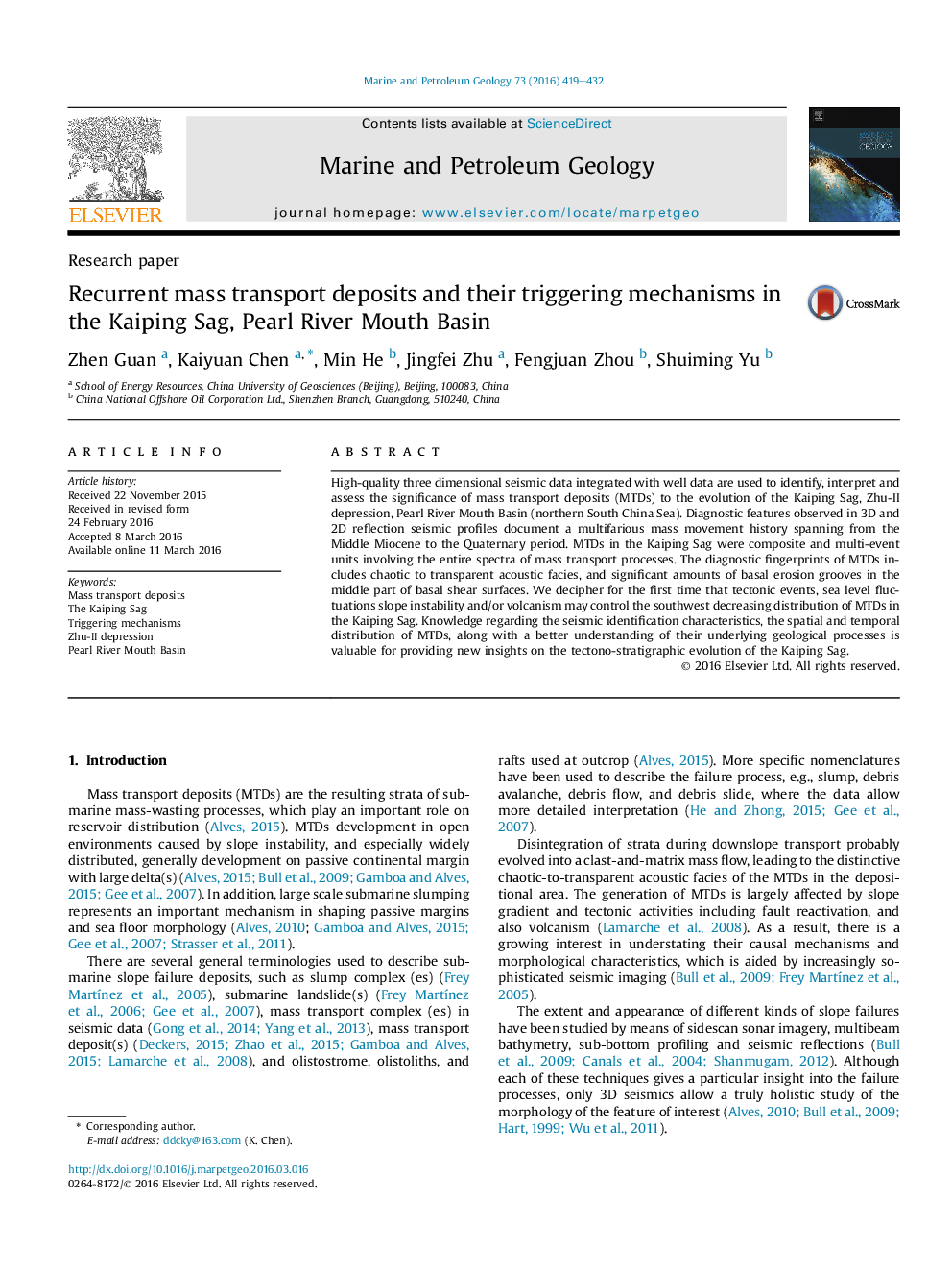| Article ID | Journal | Published Year | Pages | File Type |
|---|---|---|---|---|
| 6434822 | Marine and Petroleum Geology | 2016 | 14 Pages |
â¢The diagnostic fingerprints of MTDs includes chaotic to transparent acoustic facies and basal erosion grooves.â¢Recurrent MTDs accumulated from the Middle Miocene until the Holocene.â¢Tectonic events, sea fluctuations, slope instability and volcanism are possible triggers controlling the MTDs.â¢MTDs can act as seals for underlying reservoirs.
High-quality three dimensional seismic data integrated with well data are used to identify, interpret and assess the significance of mass transport deposits (MTDs) to the evolution of the Kaiping Sag, Zhu-II depression, Pearl River Mouth Basin (northern South China Sea). Diagnostic features observed in 3D and 2D reflection seismic profiles document a multifarious mass movement history spanning from the Middle Miocene to the Quaternary period. MTDs in the Kaiping Sag were composite and multi-event units involving the entire spectra of mass transport processes. The diagnostic fingerprints of MTDs includes chaotic to transparent acoustic facies, and significant amounts of basal erosion grooves in the middle part of basal shear surfaces. We decipher for the first time that tectonic events, sea level fluctuations slope instability and/or volcanism may control the southwest decreasing distribution of MTDs in the Kaiping Sag. Knowledge regarding the seismic identification characteristics, the spatial and temporal distribution of MTDs, along with a better understanding of their underlying geological processes is valuable for providing new insights on the tectono-stratigraphic evolution of the Kaiping Sag.
